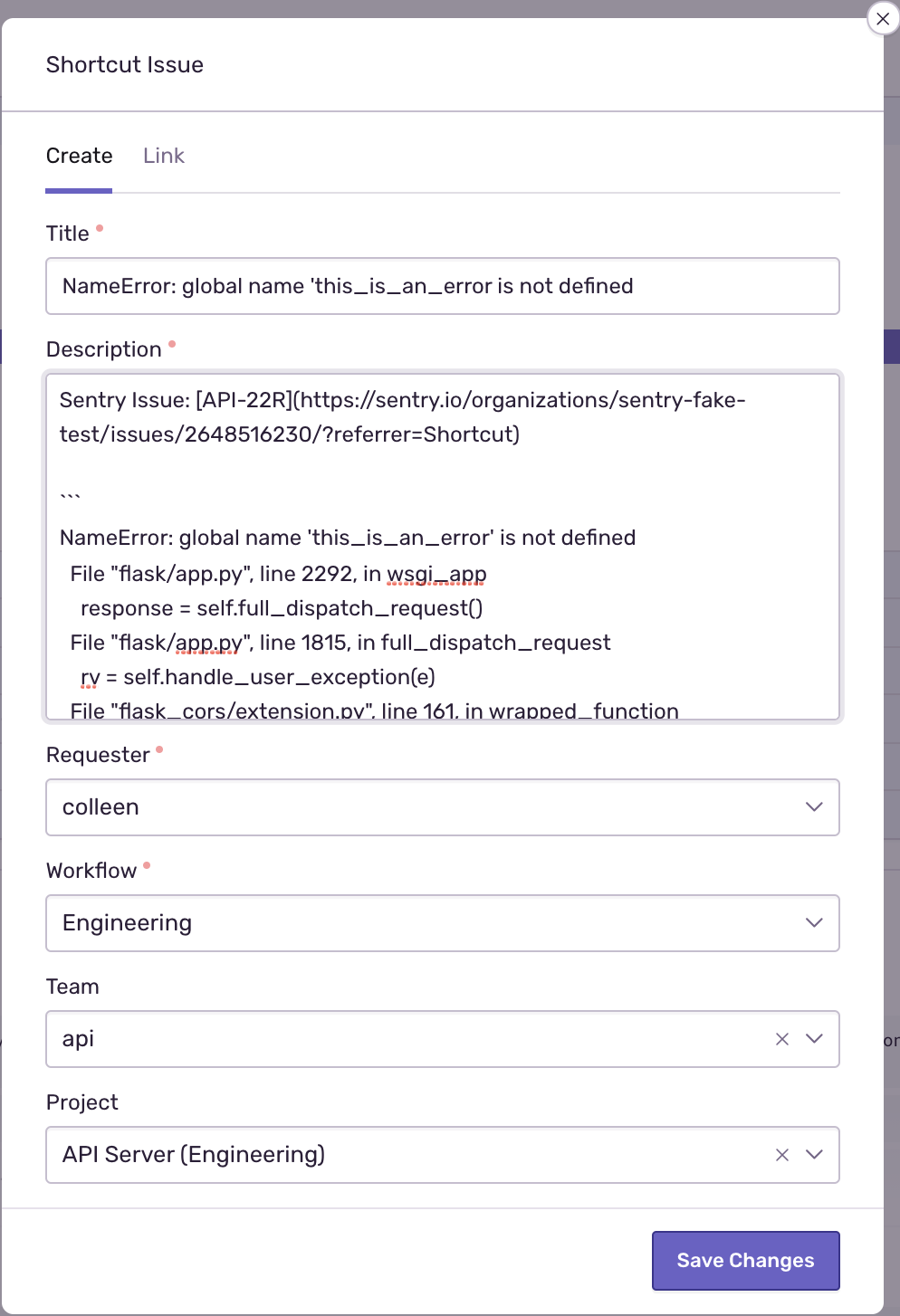Issue Link
Learn about the issue link UI component.
With an issue linking UI component, you can connect Sentry issues with a task in your project management system. This functionality provides a way to use any project management tool you use or develop.
The issue link component displays with the text "Link <Service> Issue" in the Issue Details sidebar:
Clicking the link opens a modal allowing the user to create or link the issue to a task in the external service: 
When an external issue is created or linked in sentry.io, a display name is shown that links back to the service where it was either created or linked. The display name is composed of two pieces: the project and the identifier. A hash (#) connects each piece. Here's an example of what it looks like in sentry.io:
schema.json{
"elements": [
{
"type": "issue-link",
"link": {
"uri": <String>,
"required_fields": <Array<FormField>>,
"optional_fields": <Array<FormField>>
},
"create": {
// Same as "link" schema
}
}
]
}
uri- (Required) The URI to request when the User submits the Link/Create Issue form. Check out our URI Guidelines documentation for formatting help.required_fields- (Required) List of FormField components the User is required to complete.optional_fields- (Optional) List of FormField components the User may complete.
schema.json{
"elements": [
{
"type": "issue-link",
"link": {
"uri": "/sentry/issues/link",
"required_fields": [
{
"type": "select",
"label": "Issue",
"name": "issue_id",
"uri": "/sentry/issues"
}
]
},
"create": {
"uri": "/sentry/issues/create",
"required_fields": [
{
"type": "text",
"label": "Title",
"name": "title"
}
],
"optional_fields": [
{
"type": "select",
"label": "Owner",
"name": "owner",
"uri": "/sentry/members",
"async": true
}
]
}
}
]
}
When a user attempts to create or link an issue, we will send a request to your service based on the provided uri. We send a POST request, so all the information is stored in the body.
{
"fields": <Object>,
"installationId": <String>,
"issueId": <String>,
"webUrl": <String>,
"project": {"slug": <String>, "id": <String>},
"actor": {"type": "user", "name": <String>, "id": <String>},
}
fields- Key/value pairs of the data in the form fieldsinstallationId- The ID of the installation associated with the requestissueId- The ID of the issue in SentrywebUrl- The URL of the issue in Sentryprojectslug- The slug of the project in Sentryid- The ID of the project in Sentry
actorname- The name of the user in Sentryid- The ID of user in Sentry
When creating or linking an issue, the response format must have the following schema:
{
"webUrl": <String>,
"project": <String>,
"identifier": <String>,
}
webUrl- The URL of the linked issue in your project management systemproject- The first part of the displayed issue that should probably be associated with a project in your systemidentifier- The second part of the displayed issue that should be unique to the project
Our documentation is open source and available on GitHub. Your contributions are welcome, whether fixing a typo (drat!) or suggesting an update ("yeah, this would be better").
